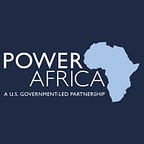Affordable wiring design will enable millions to get connected to electricity
Mr. and Mrs. Balaza Stephen were living without electricity.
They live near a small town in Kayunga District about 40 miles northwest of Kampala, the capital city of Uganda. Although they live close to the electrical grid, the high cost of wiring a house prevented them from accessing electricity.
An average cost for a new grid connection is between $500-$1900 in sub-Saharan Africa. And according to the World Bank, the GDP per capita income in Uganda is around $600 per year.
This all changed for the Balaza family on May 28, 2019 because they took part in the Affordable House Wiring Pilot Project.
With the goal of increasing electrical connections in sub-Saharan Africa, USAID’s Power Africa worked with NRECA International and Uganda’s Rural Electrification Agency (REA) to develop a low-cost house wiring design that reduces the price by up to 40%.
By sourcing local materials and reducing the cost per connection, this affordable wiring design will enable millions to get connected to electricity.
Mr. and Mrs. Balaza Stephen and Power Africa’s Deputy Coordinator Richard Nelson turned on the light during the ceremony.
During the inauguration, Power Africa’s Deputy Coordinator Richard Nelson made the following remarks:
The installation which we are inaugurating today is the first in a larger pilot of 20 households to be implemented in cooperation with Kyenjojo Rural Electric Cooperative Society in the Central Service Territory and Kilembe Investments Limited (KIL) in the Western Service Territory. Following completion of the pilot program, we will work with REA to scale up the affordable house wiring program throughout Uganda.
I would like to thank Mr. Balaza Stephen for allowing the Rural Electrification Agency to launch this design in his home, for allowing us into his home. I also thank Kyegegwa Rural Electric Cooperative Society Limited (KRECS) for effecting this electricity connection under the Power Africa-supported Electricity Connection Program (ECP). With this connection, Stephen will see his children study at night, have access to information and he can do business for extended periods.
As we light Stephen’s house using an affordable lighting solution, I want you to know that USAID and Power Africa will continue to explore more ways of collaborating with the Government of Uganda to get reliable electricity to those that need it.
Photos and narrative written by Power Africa’s Deputy Director of Communications Evan Matthew Papp.
